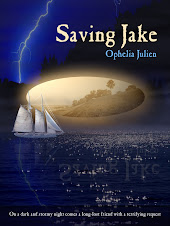Back when I wrote for
a local newspaper, a friend and co-writer remarked to me that part of our job
was figuring out how to write an entire news story out of one sentence. We both
laughed when she said that, but she had a point. Frequently, as is the case with
local news, your entire piece can be summed up in one sentence: Fourth-grade
student Cindy-Lou Resident wins the district elementary school art contest
sponsored by local car dealership. Or, Neighborhood gardener grows forty-pound
pumpkin. OR New restaurant downtown features free-trade coffee and artisan
bread. In other words, most of our stories came to us in a fairly complete
form, and our jobs were to generate full-length articles from those leads.
I guess that’s every
journalist’s job, in the end. Most news stories can be summarized in a
sentence. Theoretically most stories, period, can be summarized in a sentence. For
instance: Young orphan boy finds out on his birthday that he is actually a
wizard and needs to learn all about his true heritage and identity. OR A group
of young friends find themselves in a battle against a monster that presents as
a killer clown. OR Obsessed captain goes whale hunting. Simple, right?
But fiction is a slippery
beast compared to news stories, which is one reason that reading about different
writers’ processes is so interesting. I imagine there are fiction writers out
there who decide on a topic and proceed to figure out a story around that. I
can’t even conceive of doing it that way so I would find it fascinating to
watch someone produce a tale using that method.
Nevertheless, a great
story can come from a single-sentence method, but in a far different way than
the average news story. Stephen King came up with an epic novel that was kicked
off when he typed out one simple sentence: “He was a dark man.” From that
sentence, he proceeded to create the world of The Stand complete with a plague that ended life as we know it, a
battle between good and evil, and yes, a very dark man at the center of it. I
have always wondered how that one sentence resonated in the man’s head until it
became a novel of over one thousand pages.
I am no Stephen King,
but Saving Jake was born out of a
simple thought. Unlike Mr. King, mine didn’t present itself in one sentence,
though. What popped into my head, for no discernable reason, was, “What if I
had a choice of leaving this world? No drugs, no suicide, no pain. Just
leaving. Would I do it?” At the time, I had been kicking around the idea of a
friendship between an artist and a writer, with one of them being suicidal. In
the original story, the artist was a girl named Amy, and the writer was someone
I hadn’t yet named, but I knew at the end of the book he would be alone and she
would have ended her life. Sounds jolly, eh? Welcome to young adult fiction.
But somehow, I couldn’t
quite get the story to gel, until the above-stated thought came into my head.
And then suddenly I had an artist named Jake Holdridge and a writer named
Philip Corts and if you’ve read it, you know all about them.
I once took a class
in news story writing, and the structure of the traditional news article is to
put who, what, when, and where into the opening sentence. The why and the how make up the rest of article, with the most important information
at the top and the less important at the bottom. That way, the editor can cut
the piece to fit the newspaper without sacrificing the pertinent information.
Fiction is built in a
different way, since an editor obviously cannot cut off part of it, especially
the end, and still leave the reader satisfied. (Or expect to continue living,
as far as that goes.)
We all read news
articles. We all read fiction. Both can have one sentence as a foundation, but
how that sentence is used makes all the difference in the world.





No comments:
Post a Comment